Hummingbirds: tiny flying jewels that bring magic to Southern California gardens year-round.
You could just spend countless mornings watching these aerial acrobats zip around your flowering plants. Their wings beating so fast they’re just a blur is beyond fascinating!
Are you a beginning bird enthusiast? Or a seasoned backyard birder? Cool! Understanding our local hummingbird species can enhance your appreciation of these remarkable creatures.
Costa’s Hummingbird
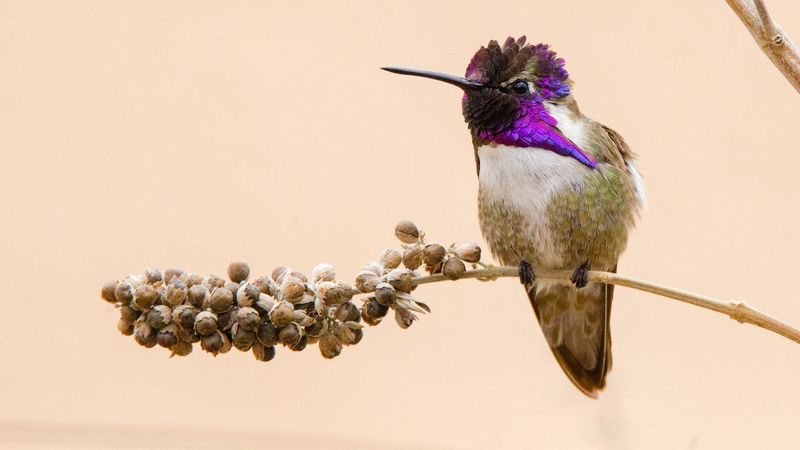
Costa’s hummingbirds are the desert dandies of Southern California.
Last spring, I watched one perform its pendulum courtship display, swooping back and forth like a tiny hypnotist’s watch.
These birds thrive in our hottest, driest regions where other hummingbirds struggle. You’ll find them sipping nectar from desert lavender, chuparosa, and ocotillo blooms.
Costa’s hummingbirds have adapted special cooling behaviors, including panting and seeking shade during peak heat.
Black-Chinned Hummingbird
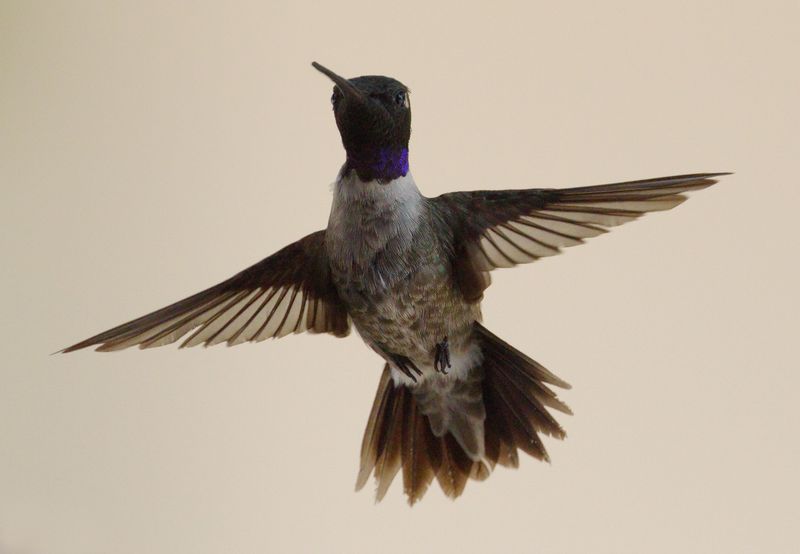
Black-chinned hummingbirds fool many observers with their understated elegance. Males have velvety black throats with a thin, purple band that only flashes when the light hits just right.
I once spent an entire afternoon trying to photograph this elusive feature!
These adaptable birds frequent Southern California’s canyons, riparian areas, and foothill gardens from spring through fall. They’re particularly fond of tubular flowers like penstemons and salvias.
Despite their delicate appearance, Black-chinned hummingbirds fiercely defend feeding territories.
Anna’s Hummingbird
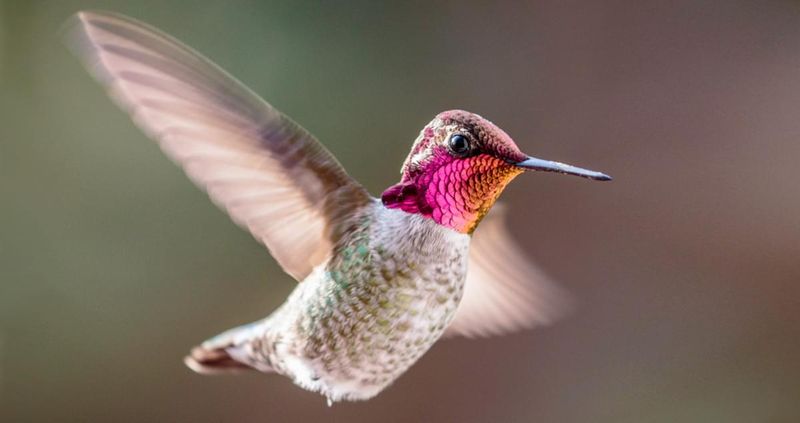
The first time I spotted an Anna’s hummingbird in my garden, I gasped at the male’s dazzling rose-pink throat catching the sunlight.
These beauties are Southern California’s most common hummingbirds, sticking around through all seasons while other species migrate.
Unlike their shyer cousins, Anna’s hummingbirds have boldly adapted to urban environments. They’ll visit feeders regularly and might even recognize you after frequent encounters!
Males perform spectacular dive displays, climbing up to 130 feet before plummeting toward the ground with a distinctive explosive chirp.
Broad-Tailed Hummingbird
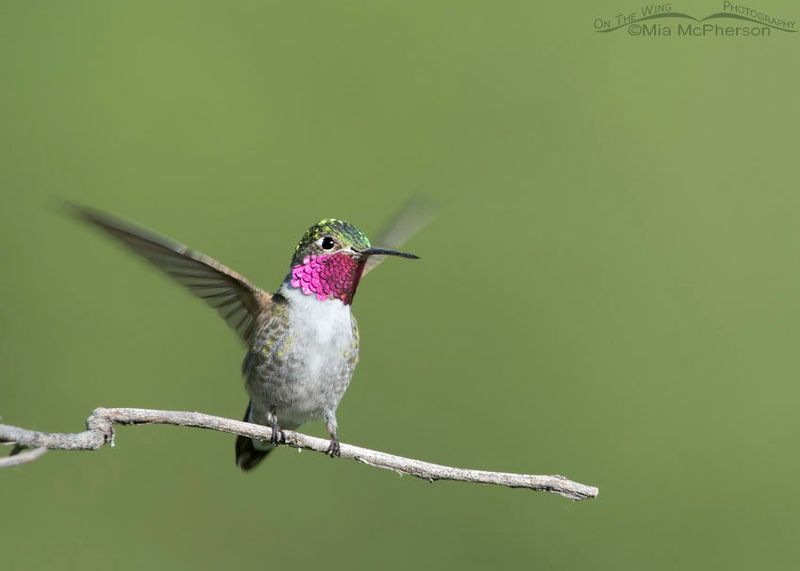
These high-elevation specialists occasionally grace Southern California during migration, bringing their distinctive wing-trilling sound that cuts through mountain air.
Males flaunt rose-red throats that shimmer in the alpine sunlight. Their broad, rufous tail feathers give them their name and help with aerial maneuvers in mountain winds.
Look for these beauties in Southern California’s higher elevations from late spring through summer.
They favor columbines, larkspur, and scarlet gilia—wildflowers that thrive in mountain meadows where these hummingbirds briefly stop during their journeys.
Allen’s Hummingbird
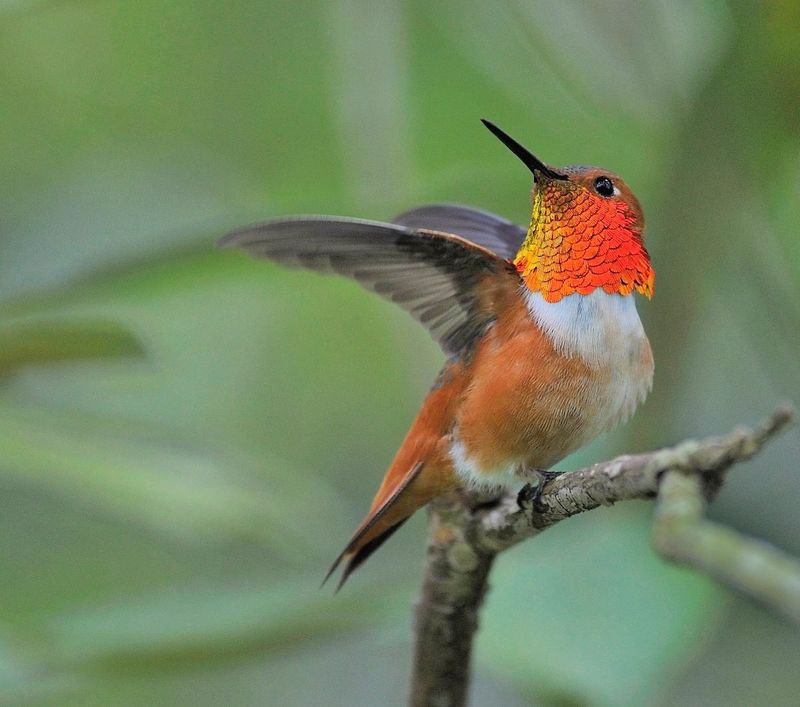
What makes Allen’s truly spectacular are their courtship displays.
Males rocket up high, then dive steeply while making a distinctive buzzing sound with their wing feathers. They’re particularly common along the coast, where they favor canyon slopes and chaparral.
Plant native fuchsias, sages, and monkey flowers to attract these beauties to your yard.
Calliope Hummingbird
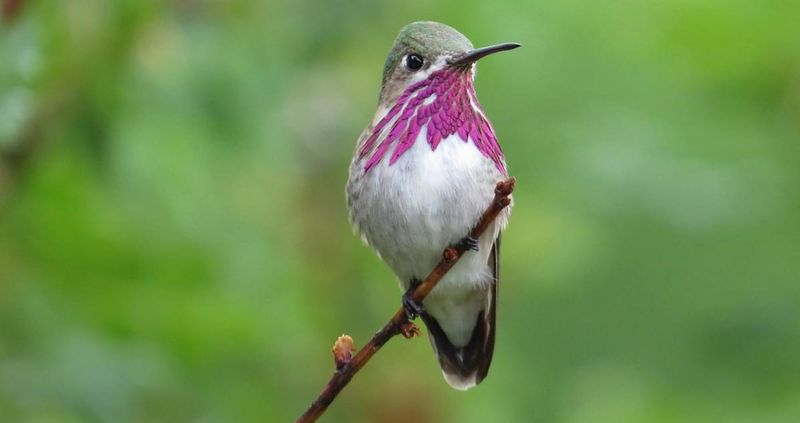
These birds hold the title of North America’s smallest bird and weigh less than a penny!
I’ll never forget watching a male Calliope feeding on desert paintbrush—he looked like a flying jewel against the orange flowers. Despite their diminutive size, these birds make remarkable migrations, traveling thousands of miles annually.
Look for Calliope hummingbirds in Southern California’s mountain foothills and desert edges during April and May as they journey northward.
Rufous Hummingbird
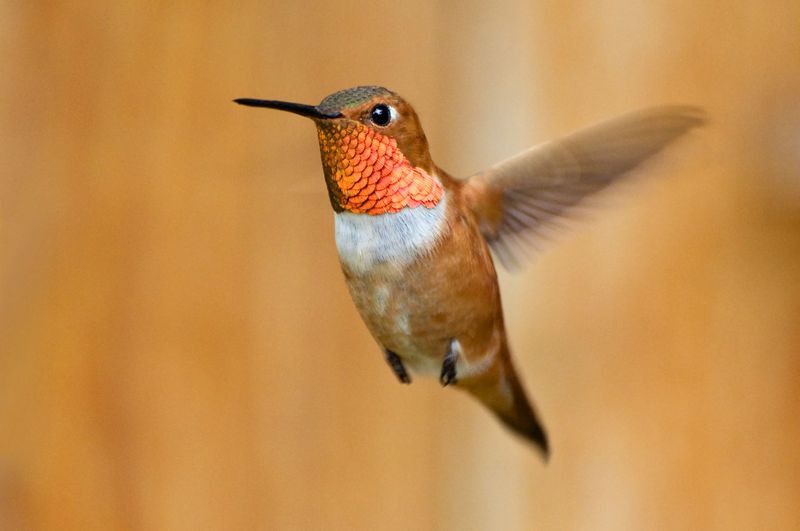
If hummingbirds had personality contests, the Rufous would win the “most aggressive” category hands down!
Males flash brilliant orange-red throats while aggressively chasing away birds twice their size. Their territorial displays are something to behold—I’ve seen a single Rufous temporarily empty an entire feeding station of other hummingbirds!
Despite spending just weeks in our region during migration, Rufous hummingbirds make an unforgettable impression.
They undertake one of the longest migrations relative to body size of any bird, traveling a clockwise loop from Mexico to Alaska.
Lucifer Hummingbird
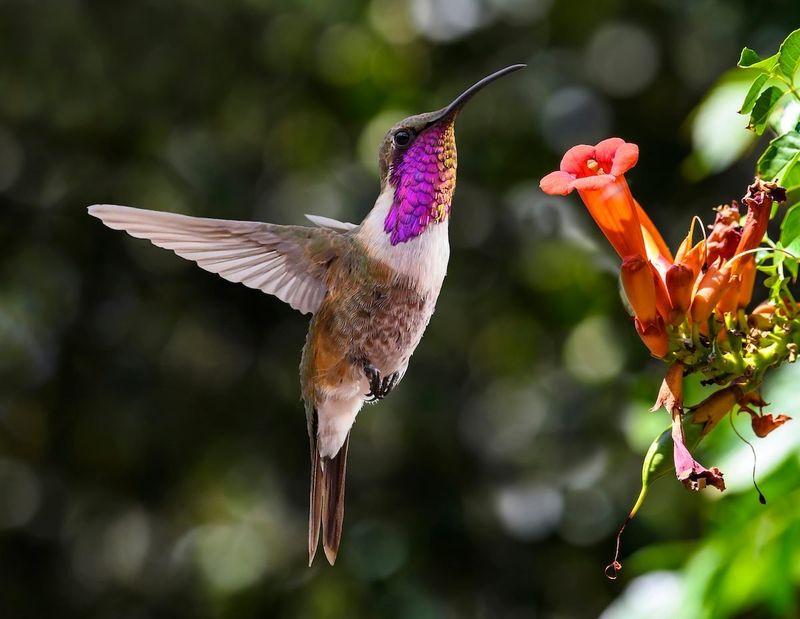
With their dramatically forked tails and males’ striking magenta throats, they’re unmistakable when present.
The name “Lucifer” comes from Latin words meaning “light-bearing,” perfectly describing how their gorgets catch the desert sunlight. These birds favor century plants, ocotillos, and other desert bloomers.
During a birding expedition to Anza-Borrego, I spent three days hoping to glimpse this rarity without success—making them the ultimate hummingbird challenge for Southern California enthusiasts.
Their scarcity makes each sighting especially valuable to document.
Creating A Hummingbird Haven In Your Southern California Garden
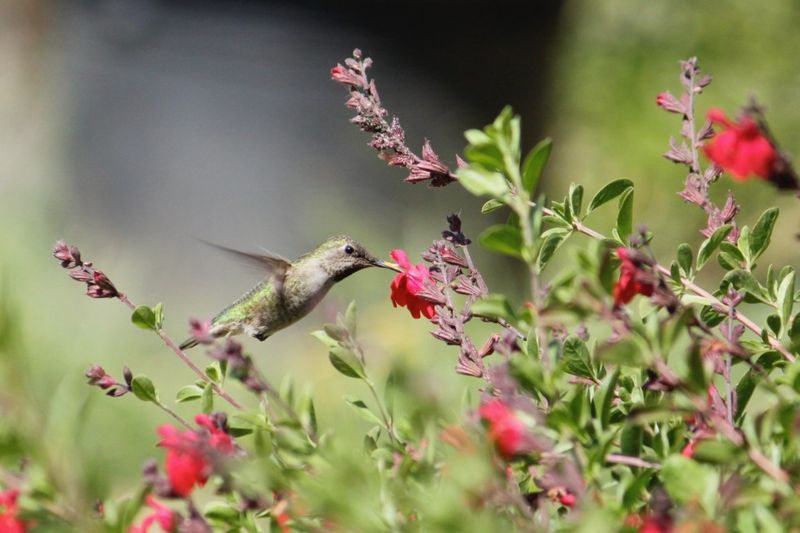
Transforming my drought-tolerant yard into a hummingbird paradise has been incredibly rewarding! The secret is planting native flowers that bloom in succession throughout the year.
California fuchsia, salvias, manzanita, and monkey flowers have turned my garden into a hummingbird hotspot.
Beyond plants, provide fresh water sources—hummingbirds adore misting fountains for bathing. If using feeders, mix one part white sugar with four parts water (never use honey or artificial sweeteners), and clean feeders weekly to prevent harmful mold growth.
Avoid pesticides that harm both hummingbirds and the tiny insects they rely on for protein. Creating perching spots with slender branches gives these energetic birds necessary resting places.
Prime Hummingbird Watching Seasons In Southern California
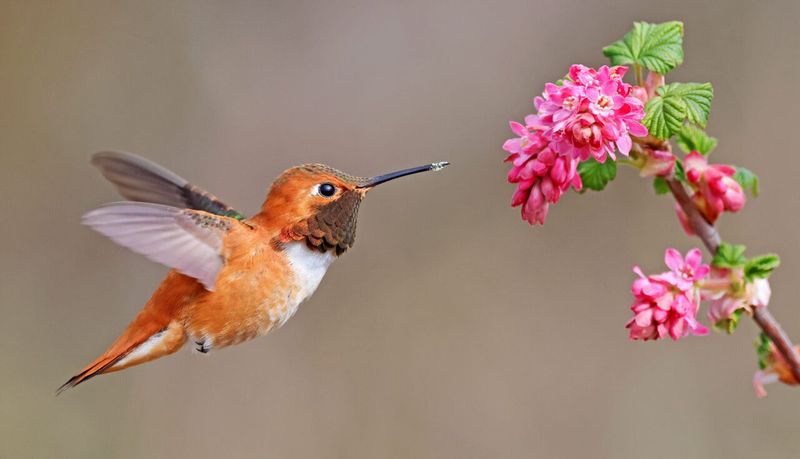
February through May offers the most spectacular hummingbird viewing in Southern California! This spring migration period brings multiple species passing through simultaneously, creating incredible bird-watching opportunities.
I’ve counted five different hummingbird species in a single morning during April peak season.
Summer brings nesting activities, when you might spot females gathering spider silk or plant down for their walnut-sized nests. Fall migration peaks from July through September as Rufous and other northern nesters head south.
Even winter rewards patient observers as Anna’s hummingbirds remain active year-round. The best viewing times are early mornings and late afternoons when feeding activity intensifies regardless of season.
